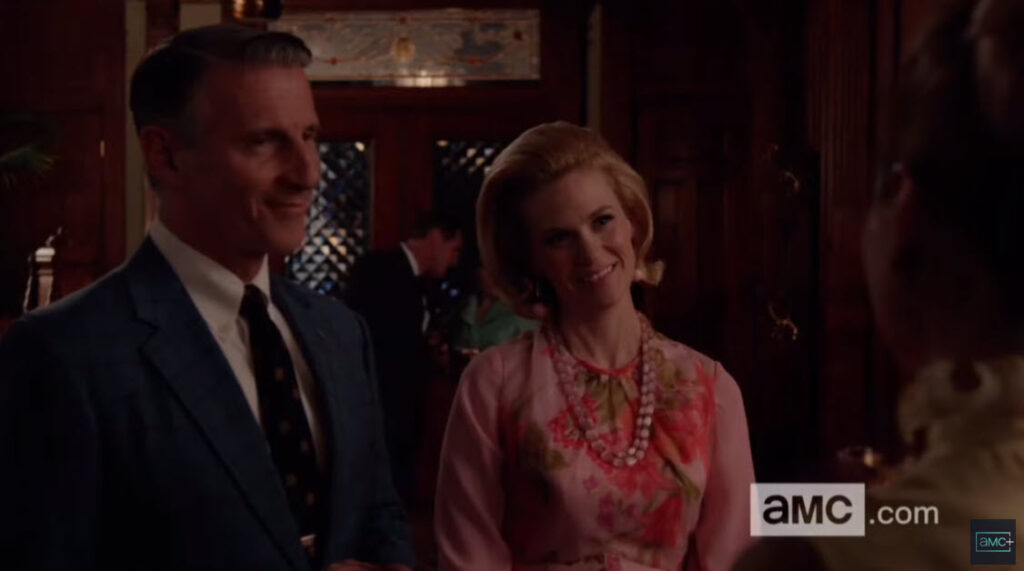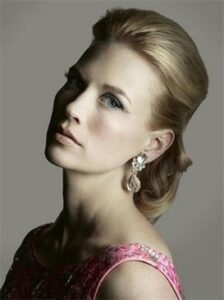
RyeGPT People of Note is a new series highlighting individuals who have a connection to the City of Rye. In the series we ask OpenAI’s ChatGPT to prepare a biography and explain the individual’s connection to Rye.
We welcome your feedback on this series – the use of artificial intelligence, the accuracy and usefulness of each article and your assistance in understanding other pertinent insights related to the person’s connection to Rye.
You can add comments at the bottom of each article or you can send feedback via Tips & Letters.
Today, meet Betty Francis of Mad Men.
Betty Francis, originally Betty Draper, is a central fictional character from the critically acclaimed television series “Mad Men,” created by Matthew Weiner. The show, set in the 1960s, provides a glimpse into the complex lives of advertising executives on Madison Avenue, exploring themes of identity, social change, and the pursuit of happiness within the constraints of post-war American society. Betty, portrayed by January Jones, is introduced as the seemingly quintessential suburban housewife, married to the show’s main character, Don Draper.
Born Elizabeth Hofstadt, Betty grew up in a wealthy family in Philadelphia. She was educated at Bryn Mawr College, where she studied anthropology, reflecting early on a sense of curiosity and a search for understanding that would be stifled by her later life choices. Betty’s beauty led her to a brief career as a model in Italy and New York, where she met Don Draper. Their marriage transported her into the affluent suburban life in Ossining, New York, where she fulfills the role of a housewife and mother, albeit with growing dissatisfaction.
Betty’s character is a study in contrasts—visually impeccable, poised, and graceful, yet internally, she struggles with deep-seated unhappiness, a sense of isolation, and unfulfilled desires. Her marriage to Don is complicated, marred by his infidelities and secrets, which further exacerbates her sense of isolation and identity crisis.

The family’s move to Rye, New York, marks a new chapter in Betty’s life, coinciding with her divorce from Don and subsequent marriage to Henry Francis, a political advisor. This move is symbolic of Betty’s transition into a new phase of her life, seeking stability and a fresh start for herself and her children in a town that represents the upper echelon of suburban New York society. Rye, with its picturesque landscapes, affluent community, and proximity to the city, serves as a backdrop to Betty’s attempts at finding personal happiness and a more fulfilling life.
Betty’s connection to Rye is significant as it mirrors her journey towards self-discovery and her struggles with societal expectations. Despite her efforts to adapt to her new life, Betty’s underlying issues remain, illustrating the challenges faced by many women of her time—caught between the post-war ideal of domestic bliss and the burgeoning feminist movement of the 1960s.
Throughout the series, Betty’s character evolves from a passive, unhappy housewife to a more complex, albeit flawed, individual seeking purpose beyond the confines of her marriage and societal expectations. Her story arc is a poignant exploration of the personal costs of maintaining appearances, the search for identity, and the pursuit of happiness in the rapidly changing social landscape of 1960s America.
Betty Francis remains one of “Mad Men’s” most intriguing characters, representing the dichotomy between appearance and reality, and the personal and societal struggles of the era. Her connection to Rye, New York, symbolizes both a physical and metaphorical move towards a new life and the challenges inherent in such a pursuit.

